
Like hues that don’t directly correlate with one slice of the color wheel, I appreciate the characteristics in life that we can’t label solely as benefits or drawbacks. Those variables that exist in the fuzzy-grey arena of “both/and” with no definitive win in one direction. This winter I decided to try flat pedals on my bike for the first time and I expected the pro/con balance to lean in a clear direction. Turns out it’s not so dichotomous, and many of the best bits of either platform are situationally bound. I truly love a good perspective shakeup, and I’d highly recommend trying flats or clipless pedals for a fresh footing into the forest.
Flat pedal famous

One of the best bits about flat pedals is the ability to get your foot to the ground and back to the pedal as fast as you like, whenever you like, without any need to satisfy the cleat/clip interaction. If you’re caught by a snotty root that aims to take your front wheel out, a quick foot plant can save the day, or at least keep a healthy patch of skin from hitting the ground. Additionally, there are countless moments throughout the season where a snappy tripod maneuver can save the ride. I used to think that folks who rode flats were less skilled, and needed the option to drop a foot out of fear. I was wrong. It’s not that simple. It’s great to be able to save a move while riding at speed by quickly planting a shoe on the earth when “clipless” cleat disengagement may have been too slow, resulting in a hip on the ground instead.
Also, there’s no replacement for the ability to fully bail. If you come up over a rise to find that the trail turns right and your aerial trajectory is leaning left, it’s nice to be able to let go of the bike and grab a passing tree or “run it out.” This classic emergency eject is far harder with clipless pedals.
No matter how muddy it is you can put your shoe back on a flat pedal and go. Anyone who’s ridden in clipless shoes after they cake with mud or snow knows how frustrating it can be to reattach your foot to the bike, and most clipless pedals don’t offer much connectivity when your cleat is disengaged. With flats you can simply stand on the pedal and wiggle your foot a little to squish the muck out and connect your sole with the pins. This is why some folks prefer to ride flat pedals during the winter months, switching to the cleats when the ground is less tenacious.
Regardless of the soil conditions, flat pedals allow you to restart a run wherever you like. There’s no need to get a long lead in to a rock roll as you might with clipless pedals because the shoe/pedal connection is immediate. This is a sweet feature when riding tricky trails that you’ve never seen, as you can spend less time waddling back up track after checking a feature and more time on the party lap. You can also start a rock roll from the very beginning of it, where you’re able to see all of the features you want to avoid or bound from. There are several other cases where it’s advantageous not having to mate a cleat and pedal, but you get the idea.

When I told folks I was switching to flats I heard loads of stories about how my shins would be filled with scabs and scars from missing the pedals or ejecting a foot mid-flight. I’ve only been running flats for about four months now, and I have just one new pink stripe on my left shin. It came during a crash where my legs found a few other lacerations and would have been cut up no matter the pedal style.
A few flat-pedal friends mentioned being able to corner faster on flats, which initially made zero sense to me. After a few months on the platform, I sorta get it. It’s confidence-inspiring to know that I can save an oversteer or understeer by planting my foot instead of sticking my hands out and prepping for impact. This benefit wasn’t immediately apparent, but after a few salvaged tumbles, the knowledge of that emergency move becomes integrated into the ride.
To save the obvious for last, flat pedals do force you to use proper body English and handling skills more so than clips. Several skills instructor certification programs around the world require that folks learn every technique with flat pedals, both because most of their clients will be on flats and because a lot of jumping and bunny-hop maneuvers demand proper foot movement to execute. For example, you can’t bunny hop a log in the trail if your feet are parallel with the ground, no matter how soft your shoes or sharp your pins. On steeper tracks, you also won’t be able to maintain a preferred foot placement on the pedals unless your heels are dropped deeply behind the pedal spindles. These and countless other nuances carry over to clipless riding for better overall foot technique. Positioning matters a lot when we only have four touch points on the bike.
Flat flops

There’s a “kick me” sign imprinted on every flat pedal. One glaring benefit that cleats hold over flats is demonstrated any time the rider needs to pedal hard and the trail is rough. As the bike dances beneath you, shifting weight and pressure with impacts and compressions, it’s notably more difficult to keep your shoe in a prime sprinting position while spinning the cranks and slamming sticks and stones. This may be the key reason a lot of gravity racers have opted for cleats over the past several seasons. There will always be some segment of a race stage where it’s faster to mash on the pedals, and those pedal strokes can be a gamble with flats.
Another boon for cleats is the ability to pull up on the pedal for added power and to adjust how much weight the rear tire receives. I didn’t think this was such a large part of the story until I got to some more technical climbs where you need as much consistent power on the drivetrain as possible, accentuated by punches of maximum watts. The ability to pull one pedal up and lighten the rear end while pressing down on the other adds a level of maneuverability and power transfer to clips that flats simply don’t have. Folks certainly adapt and learn how to ride super technical tracks with flats, but as a convert, this has been one of the most challenging bits of technique to relearn. It’s getting better with every outing.

Flat pedals are wider and longer than most any clipless option, leaving them to strike more stones than a svelt clipless model. On super low-slung gravity bikes I have had to be more mindful of my pedal placement in relation to the ground, and I’ve definitely experienced some spooky pedal strikes at my pedestrian version of fast. This is an element that’s easy enough to get used to, and it keeps me more conscious of obstacles around the pedals.
Perched above those obstacles, folks who experience knee or joint pain may find the static foot position of flat pedals challenging. Clipless pedals can be set up to allow your foot to move and wiggle around throughout the pedal stroke, whereas flats keep your shoe in one fixed position unless you lift it up and fix it someplace else. I’ve been revisited by the ghost of past injuries while riding with flats, and I find that my feet need to be in a fairly specific position with a slightly duck-footed angle to prevent pain. This issue hasn’t forced me back to the cleats quite yet, but it is one glaring disadvantage of those sharp pins and sticky soles.
If you’ve ever stood in the soap aisle wishing there was one bottle labeled “dish soap” and another “laundry detergent” to replace the smelly menagerie of options, flat pedals could be somewhat daunting. There’s no perfect amount of pin and sole connectedness that works for everyone, leaving you with hundreds of slightly different pedal shapes and pin layouts to pair with as many sole patterns. Some folks want to be locked to the pins as if they had cleats, where others prefer to easily adjust their foot placement mid-descent. You may see some dirt jump riders who grind their pins down so they can more easily turn a foot in the air, and some gravity racers will add longer pins for additional grip. It’s cool to have a wide spectrum of options, and it may take a while to find the ideal shoe and pedal combo for you.
Flat out different

A few of the above benefits and challenges could easily be seen conversely, and there are as many elements of riding flats that exist in the grey space: neither boon nor bust. For example, when jumping with flats it helps to add a small amount of pressure between your hands and feet to maintain grip. I found this nuance intriguing, and it allowed me to think differently about how I interact with the bike in the air and what’s happening with each of my body parts. I also found myself compressing harder into the lip of jumps to pop the bike up higher with me where it couldn’t drop away from my unattached feet. The loftier leaps have led to more body movement between the lip and the landing, which makes jumping feel far more comfortable. As I can move around more in the air the more comfortably I am getting further up there, with the knowledge that I’ll be able to maneuver the bike where I want it to land.
I’ve adjusted my suspension a tad with flats, which has helped further my understanding of the bike’s specific damper tune and how I can manipulate it. I’ve come to prefer a little extra low-speed compression and a faster rebound setting, allowing the bike to stay higher in its travel with a more supportive rear tire feel. With the added elasticity of my fully-dropped heels, rear tire traction seems more easily achieved and I can focus the suspension tune on other ride characteristics. Of course, I could drop my heels as far with cleats, but without the threat of forced ejection, it wasn’t as easy to remember that technique.
Generally thinking about shoe and pedal interaction more seems good, as long as it’s not distracting. Riding flats has given me a reason to consider two of my four contact points, which has somewhat changed the way I ride my bike. This too could happen with consistent clipless use, but switching things up is a great way to check in and learn something new.
Finally, with flats pedals you can buy better looking shoes that don’t scream “techy athlete” everywhere you go. You can even wear the same pair of Vans that get you to the farmers market, yoga class, and a hip-hop show. You just need to find the level of pedal connectivity that works for your feet. This isn’t necessarily an advantage, apart from the fact that you’ll never arrive at the trail without your riding shoes on. Well, unless you wear flip-flops or sandals. Those might suck in terms of protection.
In summation
This may sound like a load of accolades for flat pedals, and largely it is, but that’s more a reflection of their newness in my life than of actual advantages. Either pedal option is going to work for most pedalers, and one of them may be better in certain circumstances. Above all, this little swap-experiment reminded me to maintain curiosity in this wonderful sport, and to consistently look for different ways to enjoy time with the trees.










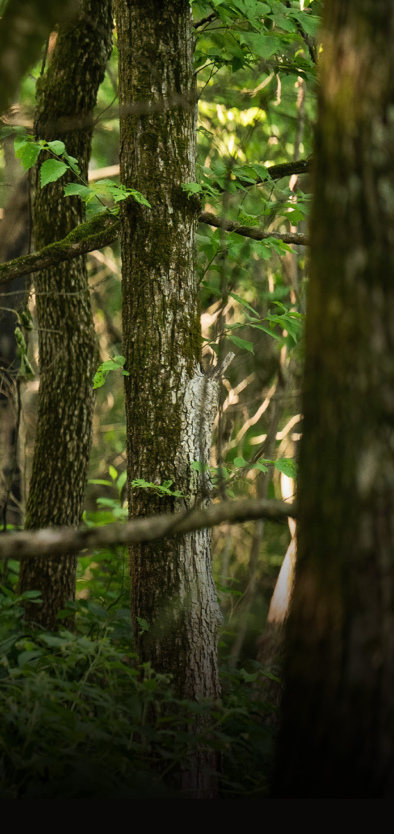


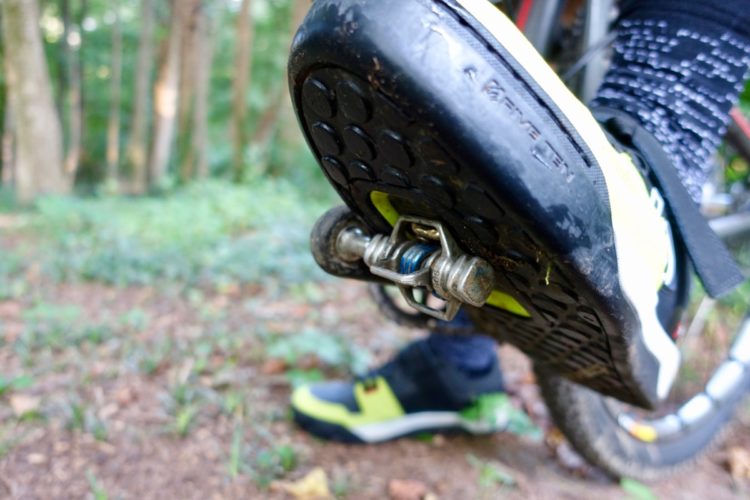


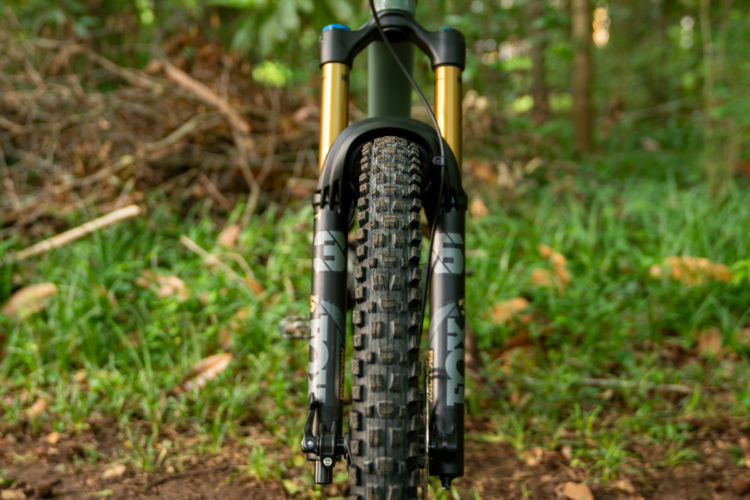
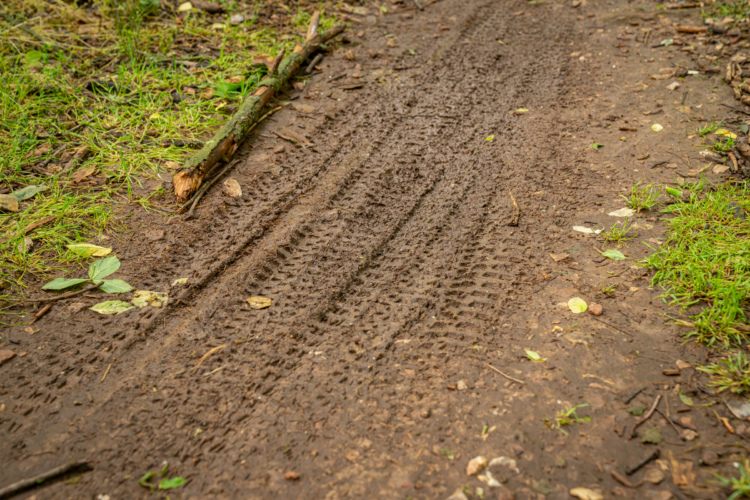
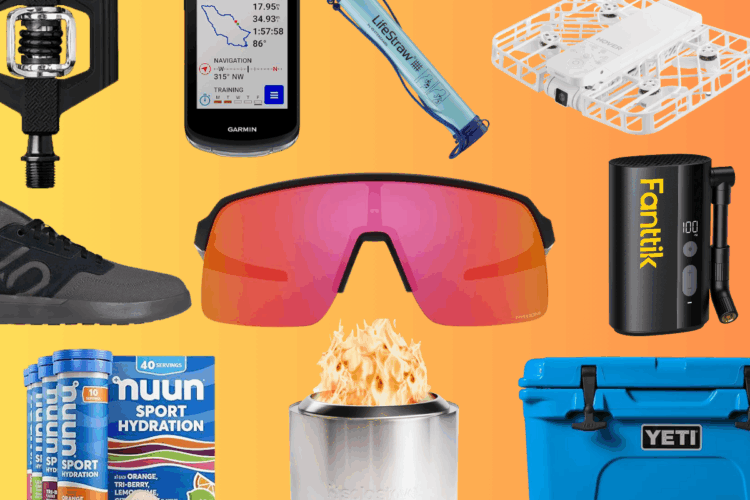
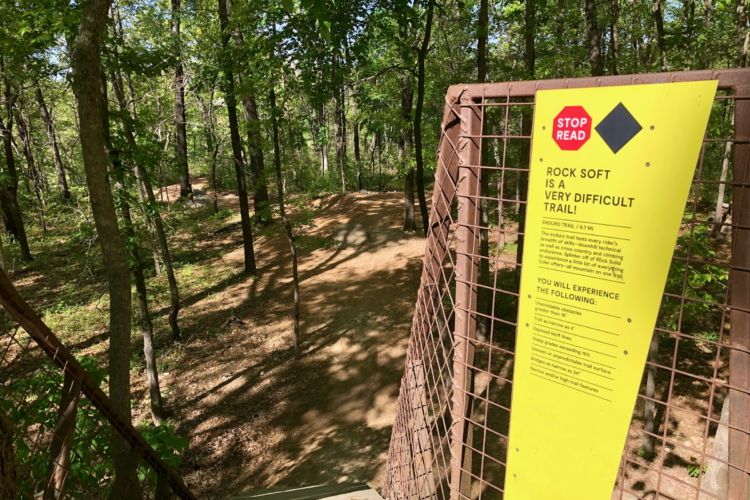

25 Comments
Apr 13, 2022
Rides since fatherhood have been far more casual, and having shoes that work on and off the bike have been one of many ways to simplify a more complicated life. Now I wear the same shoes whether getting out with friends on dirt, or taking Lil Dude to the DJ park. Simple is good, though occasionally I rock the flipflops with sharp pins down to his school when he gets out. Life on the edge!
Apr 14, 2022
I have bad knees and found that on a (regular) or flat pedal I could move my feet around for better positioning depending upon the terrain and relieve pain .
The more I rode and learned foot to pedal positioning the better I have liked flat pedals. I’ve never had many pedal strikes like I did when clipped in with little dinky pedals.
I now run big platforms that are nice and wide . You can dance around and really position your body and set up instantly for different situations you can’t on clip in pedals. It’s a joy to be free .
I freeed myself up about 24-25 years ago on the dirt . It’s been about 4 years on the road and my knees are so much happier.
I now have a knee replacement and not being locked in is beautiful.
I am running Chromag pedals. Scarb and then their widest one that I forgot the name of . It has longer pins and a wider platform from the crank arm . Check out this brand for flats also they make a great pedal.
Apr 14, 2022
May 4, 2022
Move the feet back and get on the balls of your feet . Lower the seat and be in a squat over rough and technical terrain.
I run wide pedals and can get weight on the outsides of the pedals in corners for pressure control.
It’s like you can dance on your pedals and control your bike .
Apr 14, 2022
Apr 14, 2022
Apr 14, 2022
Now I'm riding flats until I learn bunny hops and jumps correctly, I briefly tried clips last year and felt myself cheating on every hop. I love clips for tech climbing, any climbs for that matter. Power delivery is much more consistent but I do like the playful feel of flats while I'm relearning my technique.
Apr 14, 2022
Apr 14, 2022
Apr 14, 2022
Apr 15, 2022
@singletracks - I think you should check them out and do a review on the magnetic pedals. I'd be curious to hear your thoughts.
Apr 14, 2022
May 4, 2022
https://pedalinginnovations.com/
Apr 15, 2022
There is little that cannot be done with platforms, very little. Like pulling the pedal from BDC (bottom dead center) is the one and only thing I cannot do with platforms.
SPD's and those horrific wing tips... I really want to see a trials comp with those hospital bill manufacturing pedals in use. Hell, the ER will be brimming with biz and bills going out as riders are hauled in on gurneys.
Apr 14, 2022
Apr 18, 2022
Apr 14, 2022
Apr 16, 2022
Apr 15, 2022
Apr 15, 2022
Apr 15, 2022
I use clips on my gravel bike still, but I also switch to flats for bike packing cause no sprinting, easier to avoid dropping a loaded bike, and I don't need an extra pair of shoes for camping.
Apr 14, 2022
Apr 15, 2022
Need to get sorted on the proper usage is all it takes.
My cadence runs 120-180 all day long. It does take getting accustomed to staying planted. All the while, you can reposition your feet at any time without drama. Takes practice and miles however, will become autonomous sooner than you think.
Apr 14, 2022
I have been riding, and previously racing, mountain bikes for 30 years and clipless for a good 24 years. I switched for one simple reason... SAFETY. I was living in Santiago, Chile at the time and quickly realized the steep, technical, very dry terrain there was highly difficult. And to make matters MUCH worse the trail conditions there are called "anti-grip". with tiny rocks, sand and loose..everything. So many slide outs, so many gashed and slashed elbows and knees. On went the knee pads and elbow pads, which I had never worn, and of course flat pedals for the reasons you mentioned "getting my feet down on the ground, FAST." The normally tricky process of getting out of clipless was compounded by the dry dirt further holding my clips in the pedal.
I have not looked back. All the pro's you mentioned...check, the few con's...check. I have since left Chile and have lived in a jungle climate (Costa Rica) and now the east coast of the US where the terrain is wooded, wet and punchy. And I still totally appreciate the flats. They have saved me many times, by being able to get my foot down or to bail out on endos, or whatever, is a game changer. I have actually become a better descender and faster in corners for the same reasons you mentioned, I know I can get myself out of trouble by being on flats. Climbing? no problem I am still able to more than keep up with my same clipless buddies.
One definite downside is re-learning how to get over stuff, I quickly realized I didn't know how to bunny hop. And for the most part, I really still don't have the skill mastered, but then again obviously I never did, I just pulled up on the pedals. Still working on this one, old habits die hard.
If I were still a serious racer I would probably wear the clipless. But, those days are far behind me. My priority now is FUN, and to be able to continue riding, which is where the safety part comes in. And if I am going faster in the corners or better able to handle technical terrain, isn't this then "mission accomplished" I sure think so.
Again, thanks for the great article and letting me go on! I have been thinking about this topic so much when riding over the past bunch of years, so glad to see it brought up.
Cheers,
Robert
Apr 14, 2022
I ride more gravel and mtb on dirt which allows me to ditch the bike when needing to.
on road there is really no major obstacles which require immediate dismount.
it’s a blast no matter what one rides.